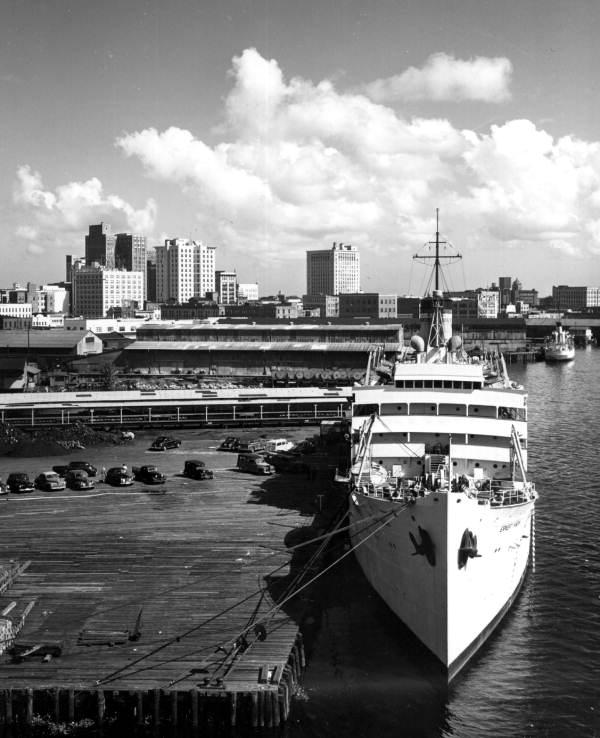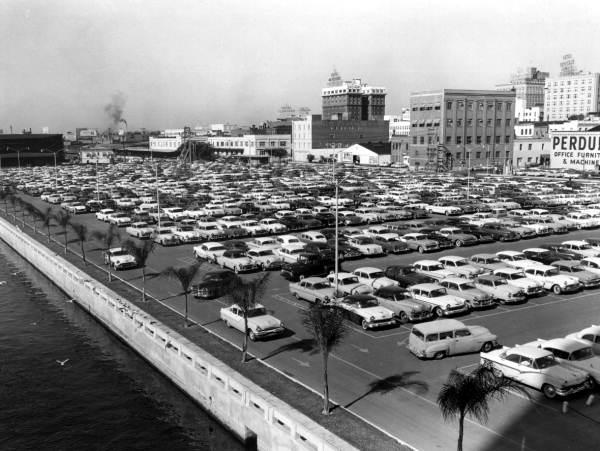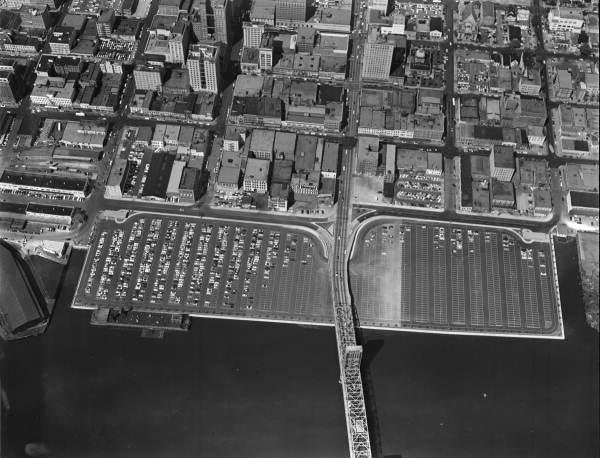A Different Waterfront
Downtown Waterfront Aerials
During Downtown's heyday, the city turned its back to the St. Johns River. Springfield Parks served as the central public and recreation space for urban Jacksonville, while the river was the city's economic lifeblood.
Merrill-Stevens Shipyard
During this time, Berkman Plaza and the troubled redevelopment site known as the Jacksonville Shipyards was the home of one of Jacksonville's largest employers, the Merrill-Stevens Drydock & Repair Co.
Founded in 1866 by James Gilman Merill, Merrill-Stevens evolved from a blacksmith shop to the largest Atlantic shipyard south of Norfolk, Va. during World War II. During the war, the shipyard was known for its production of motor gunboats While the company no longer has any operations in Jacksonville, it lives on as Florida's oldest continuously operating yacht services company with production facilities on the Miami River, in South Florida.

Downtown Waterfront - Bay Street
During the mid 20th Century, Bay Street was Jacksonville's waterfront street of commerce. The waterfront and many of the wharves where located less than a block south of Bay Street.
Commodore Point
Commodore Point was the home of the St. Johns River Shipbuilding shipyard during World War II. This short lived shipyard employed 20,000 Jacksonville citizens in 1944, who produced Liberty ships bound for Europe and the Pacific. During the 1950's, this area gained popularity in industrial based businesses that had begun the trend of moving outside of the heart of downtown. Today, Metropolitan Park occupies the site of the old St. Johns River Shipbuilding Company. Despite the reduction in industrial activity, Commodore Point still is the home of the North Florida Shipyards, Inc.
The Southbank
During this era, the Southbank had a street grid, shipyards like the Northbank, and marshland where MOSH and Friendship Fountain are now located. By the end of the decade, the Southbank had begun to see massive redevelopment with the construction of Prudential Tower (now Aetna), Baptist Medical Center and the Fuller Warren Bridge.

Northbank Waterfront - The Railyards
The west end of the Northbank waterfront was dominated by Atlantic Coast Line railyards and warves catering to warehouses and manufacturing facilities near the popular Jacksonville Terminal.
The age of modernization begins
Elected in 1949, William Haydon Burns began the first of five consecutive terms as the mayor of Jacksonville. Under his leadership the face of downtown would change from one of riverfront industry by replacing blighted wharves with government facilities and massive surface parking lots. What was once known as skid row was replaced by the world's largest Sears store, Atlantic Coast Line Railroad's new headquarters, city hall and the Duval County Courthouse. The face of the riverfront would never be the same.
Today, most of Jacksonville's river based industries are located north of the Hart Bridge.
Photo article written by Ennis Davis


































